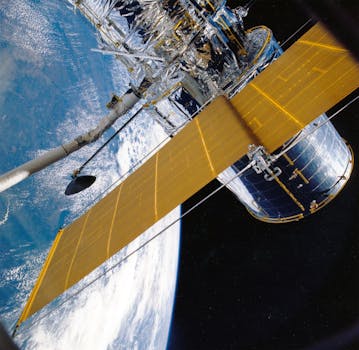
GEO Satellites: Understanding the Technology and Applications
GEO satellites, or Geostationary Earth Orbit satellites, are a type of satellite that orbits the Earth at an altitude of approximately 36,000 kilometers, which is above the equator. At this altitude, the satellite’s orbital period is equal to the Earth’s rotational period, allowing it to remain stationary in the sky relative to a fixed point on the Earth’s surface. GEO satellites are used for a variety of applications, including telecommunications, weather forecasting, and navigation.
The technology behind GEO satellites is complex and involves a range of systems and components. The satellite itself is typically equipped with a range of instruments, including transponders, antennas, and solar panels. The transponders are used to receive and transmit signals, while the antennas are used to communicate with Earth stations and other satellites. The solar panels provide power to the satellite, allowing it to operate for extended periods of time.
Applications of GEO Satellites
GEO satellites have a range of applications, including telecommunications, weather forecasting, and navigation. In the field of telecommunications, GEO satellites are used to provide global coverage, enabling communication between different parts of the world. They are also used to broadcast television channels and provide internet connectivity to remote areas. In weather forecasting, GEO satellites are used to monitor the weather and provide early warnings of severe weather events. In navigation, GEO satellites are used to provide location information and timing signals, which are used in a range of applications, including aviation and maritime navigation.
One of the key benefits of GEO satellites is their ability to provide global coverage. Because they are stationed above the equator, they can communicate with a large portion of the Earth’s surface, making them ideal for applications that require global coverage. Additionally, GEO satellites are relatively low maintenance, as they do not require frequent adjustments to their orbit. This makes them a cost-effective option for a range of applications.
Challenges and Limitations of GEO Satellites
While GEO satellites have a range of benefits, they also have some challenges and limitations. One of the key challenges is the high cost of launching a GEO satellite into orbit. The cost of launch can be prohibitively expensive, making it difficult for some organizations to access this technology. Additionally, GEO satellites are subject to a range of environmental factors, including solar flares and space debris, which can impact their operation and lifespan.
Another limitation of GEO satellites is their relatively low data transfer rates. Because they are stationed at a high altitude, the signal has to travel a long distance to reach the Earth’s surface, which can result in delays and data loss. This can make it difficult to use GEO satellites for applications that require high-speed data transfer, such as video conferencing and online gaming.
Future Developments in GEO Satellite Technology
Despite the challenges and limitations of GEO satellites, there are a range of future developments that are expected to improve their performance and capabilities. One of the key areas of development is the use of new materials and technologies, such as advanced solar panels and more efficient propulsion systems. These developments are expected to improve the lifespan and performance of GEO satellites, making them more cost-effective and reliable.
Another area of development is the use of small satellites, which are smaller and less expensive than traditional GEO satellites. These satellites are being developed for a range of applications, including telecommunications and Earth observation. They offer a range of benefits, including lower costs and increased flexibility, making them an attractive option for organizations that require access to satellite technology.




